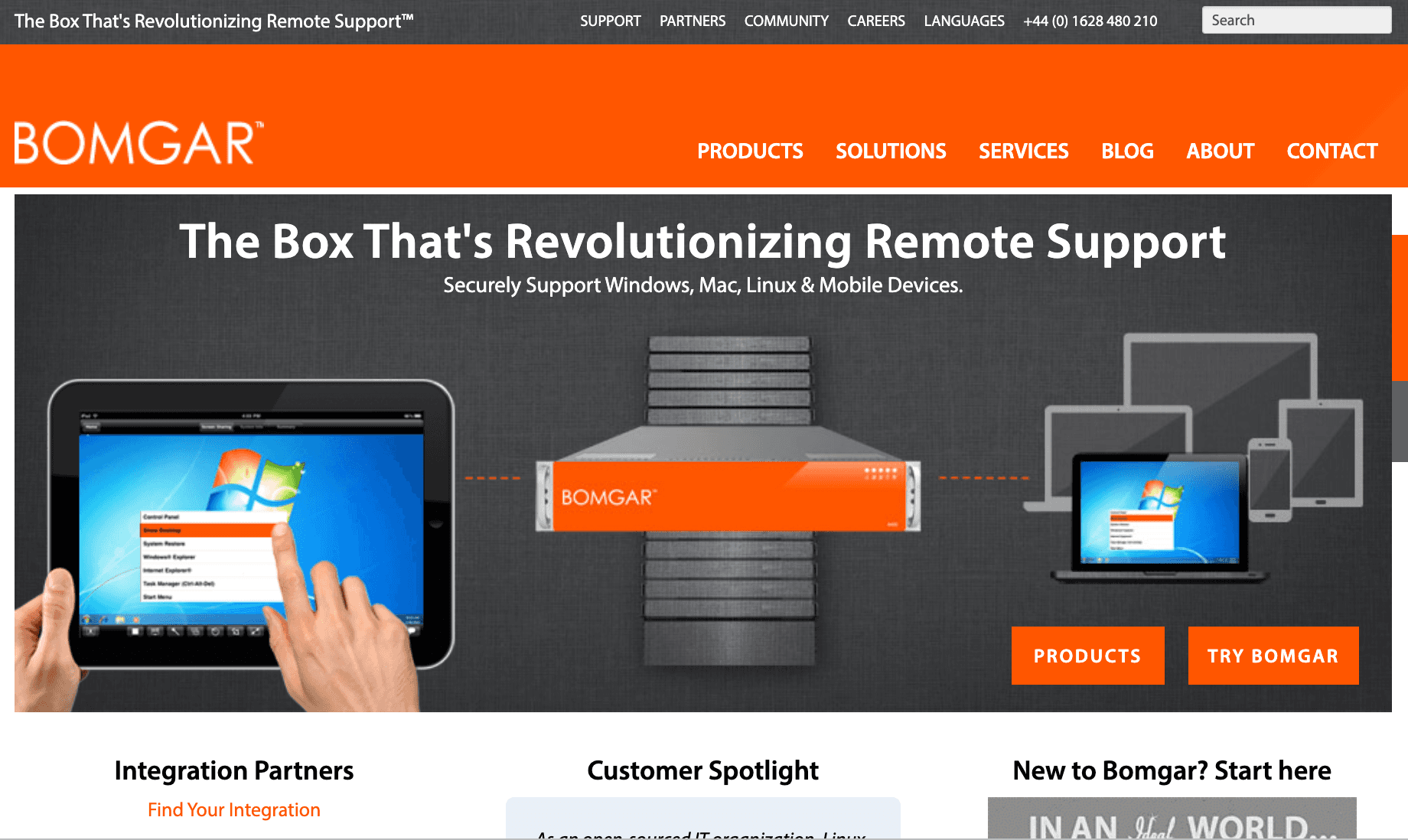Bomgar Product & Sales Communication Lead
Head marketing writer for Bomgar
I joined the product marketing team in a time of significant transition. We were headed for the enterprise market, and the company needed a writer who had significant experience writing for executive audiences. They hired me to serve in this role. I took our content library from minimal to world-class. I partnered with the VP of Customer Success, VP of Marketing, and VP of Product Marketing to produce a robust set of case studies, sales emails, and complex digital campaigns. I helped the company establish a voice that resonated with executive decision-makers and established much of the content around our FIPS 140.2 certification (a government security requirement).
Case Studies
One of my major tasks at Bomgar was to ensure we were telling our customers' stories. I spoke with our customers regularly to understand how they used our products to improve efficiency, reduce costs, and improve customer support.
Campaign Strategy for Major Market Research Report
I was asked to develop a series of concepts for videos, emails, and landing pages surrounding our Gen Y research and focus and a Symposium we would be hosting with company and industry experts. This was just a series of concepts. We decided to go with a more traditional approach and mailed direct invitations to the guests.
Concept 1: Gen Y Character-Driven Multichannel Campaign
About “Genny Y”: Genny Y is a female member of Generation Y. She could represent the generation as both a customer or an employee. (We can flesh out more of a story on her as we flesh out the concept).
How We Use This Concept
Are you listening to the support needs of Generation Y? We'll think outside the 3-D box we proposed in Round 1 of concepts. Included in the box is a set of earbuds and a card directing the prospect to go to a landing page to “Tune in to hear what Genny Y has to say about support and register for the Generation Y Support Symposium.”
On the landing page, the prospect can download a podcast or video where Genny Y talks about the support needs of Generation Y or the work environment for Generation Y. See episode sketches below.
Genny Y “Message to the CIO”
Genny Y just sat through phone support and wants to share a message with the CIO on how he/she can better support her generation. She may even interview a CIO character for her podcast on Gen Y issues.
She can speak to how she’ll tell all her Facebook friends not to use company XYZ because their support is “challenged.”
Genny Y “How I’d Run This Place”
Genny Y is working on her master’s degree and works at a local electronics box store in the customer support center. She talks in this podcast about how bad her job is because people have to wait so long, drive to drop off their sick computers, or wait days to get simple fixes.
She could also work in a call center and propose a better method of support.
Other Ways to Promote Genny Y Concept
Social Media: Genny Y could have her own Facebook account and Twitter page and talk about issues for Generation Y. She could invite you to this symposium to hear how “in-the-know” companies like Novell and Fidelity (FIS) have it together for tomorrow’s leaders.
Email: Genny Y could take her message to the CIO in the form of an email and invite executives to the Symposium.
Voicemail: “Hi! This is Genny Y calling as a representative of Generation Y. I’d like to invite you to a symposium on how to deliver support to this next generation of consumers and employees…”
Concept #2 Linked In Campaign
We propose three ways of connecting with CIOs, CTOs, and other tech leaders through LinkedIn.
LinkedIn Group: Create a group on supporting Generation Y. Our speakers could contribute information and discussions on supporting this group. We invite technology leaders and customers to join this discussion group and send out invitations to individuals in this group to the symposium.
Multiple Meetup Groups: Create a group for the Generation Y symposium series for the proposed cities and invite area tech leaders to the event. We don’t have as much control over the titles with this approach, but we may have the most reach to potential attendees this way. The beauty of this mechanism is that when someone registers, they automatically get a message in their feed about how they’re attending the event. This helps us spread the word to their connections.
Group Outreach: We launch a PR-type campaign to groups of CIOs and other technology leaders, inviting them to this event. We contact the leader of the groups and ask them to share the invitation with their group members. We could also extend an invitation to the discussion and/or event group should we go that route.
